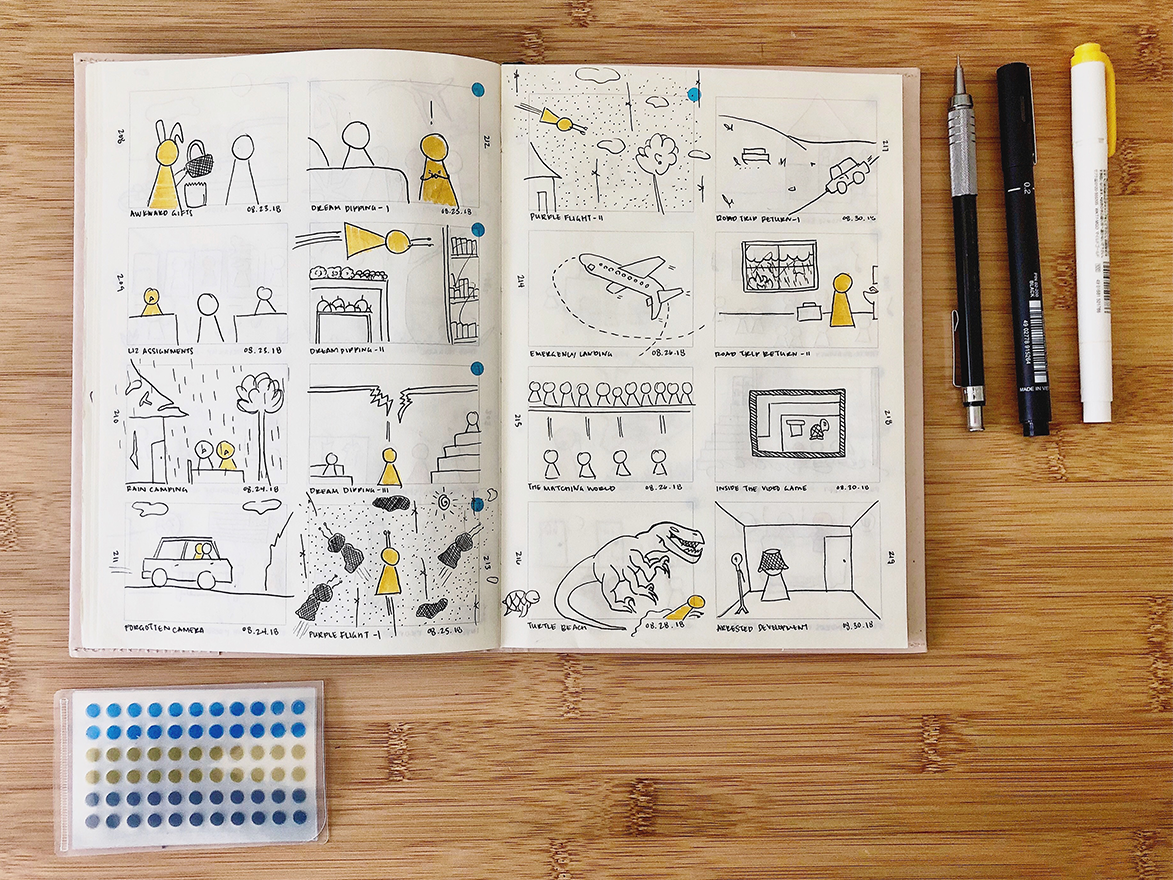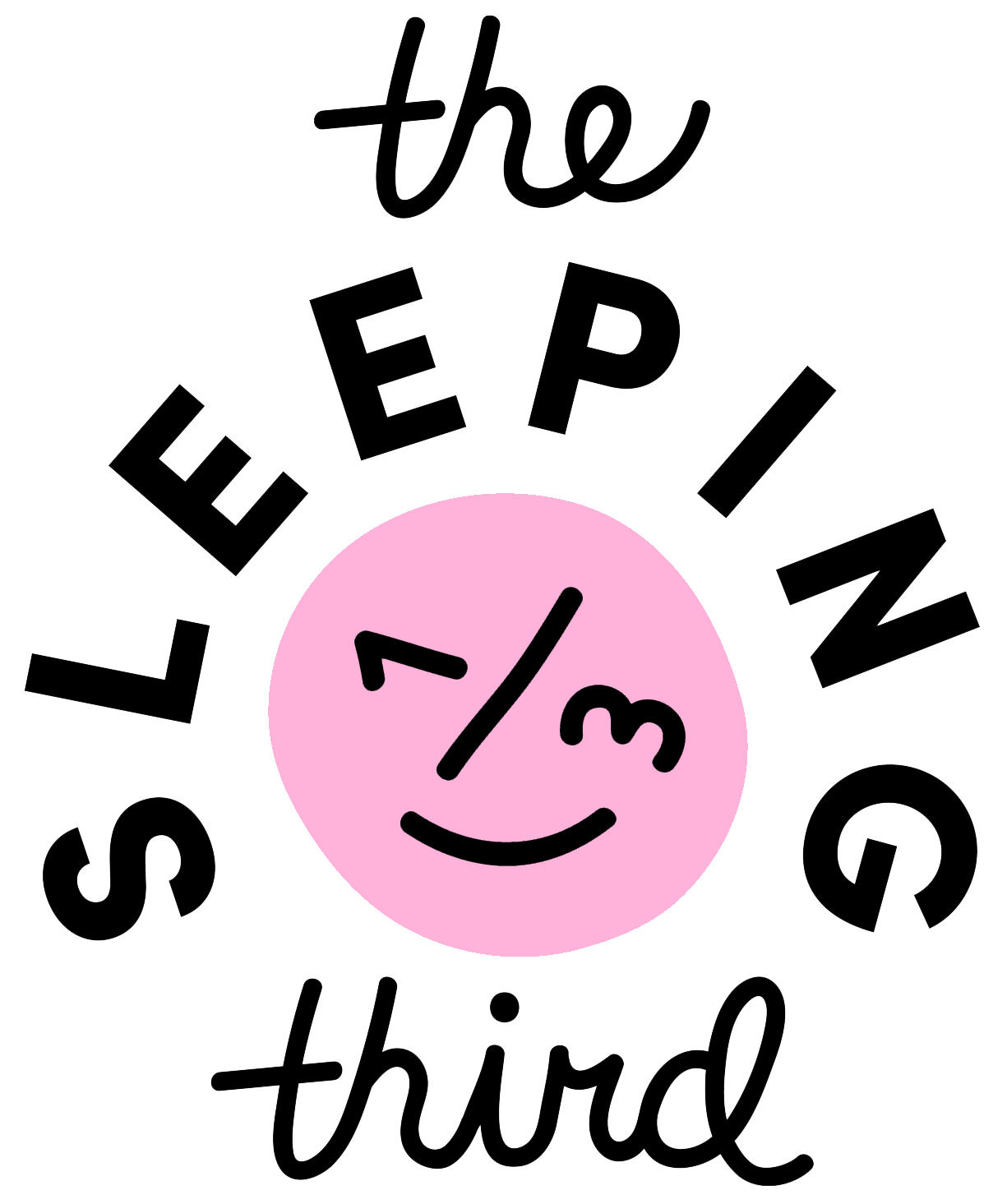Let’s Dream Brighter
Maybe you love your dreams; maybe you suffer from debilitating nightmares. Perhaps you’ve had a handful of lucid dreams in your life; perhaps you have them every day. Whatever the case may be, you have an untapped curiosity for dreaming, the wild world inside the mind that happens to all men, women, and children across the globe… every night.
I’m obsessed with sleep, but, dreaming is my favorite part. Science is still working to uncover the mysteries of the dreaming mind, which is why it makes for such a delicious topic of investigation. We all can be researchers in our nighttime labs. We can uncover personal insights, patterns, and experiences that I hope will shape a new level of wellbeing.
I want you to celebrate your dreams and bring them to the limelight. Grab them when you wake up, work through your nightmares, experience the joy of lucidity, connect with your imagination, and ultimately live a happier, brighter life as a result.
I’ve just barely scratched the surface of content here, and encourage you to go deep. There’s so much waiting for you there.
What is Lucid Dreaming?
Lucid dreaming is an amazing state of awareness in which you know that you are dreaming while you are in a dream.
Nearly everyone is capable of it with a little practice.
Dig in below, and check out my favorite sleep and dream resources to take it further.
Image by Joshua Coleman

First, Perfect The Basics
It’s so tempting to skip out on the simple things and go right for the main goal - having lucid dreams! People often ask, “how can I have a lucid dream tonight?” My response is always the same: there’s no magic bullet - dreaming takes practice. To achieve intentional lucid dreams consistently (the best kind), first, focus on the basics.
Get Great Sleep
Great sleep in paramount to health and happiness in life… and in dreaming! Browse Sleeping for more on prioritizing your best sleep. To get great at dreaming, you must start with healthy sleeping habits. You may have experienced lucid dreams during jet lag or periods of sleep deprivation, but it’s important not to rely on these for results.
Get More Sleep
According to the National Sleep Foundation, adults need 7-9 hours of sleep. I find that targeting 9 hours is the sweet spot for dream practice. REM periods last longer after 5-6 hours of sleep (around dawn), so the longer you sleep, the longer time you spend in REM, and the more likely you are to have lucid dreams.
Focus on Recall
Before jumping right into lucid dreaming, first focus on advancing your ability to remember your dreams. I started with very low recall: A few times a month. Now, I recall 3-6 per night, and up to 10! You can do it. Resolve to remember your dreams every night. Think about it before bed and set your intention as you drift to sleep.
Write Dreams Right Away
Whenever you wake in the middle of the night, write down your dreams or passing thoughts as soon as you stir. Scribble down some keywords and don’t be precious about it! A plain notepad will do, you can transcribe it later. Get out just enough to jog your memory in the morning and go back to bed.
Keep Up a “Journal”
Keeping a journal is something you must do. It’s your source of wisdom and the output of your practice. I say it in quotes because you have to find a method that works for you that you will maintain. I can’t handle writing freehand, so I keep a spreadsheet. Some people like apps, others love writing.
Read, Study, Practice
You are here, so you are eager to get better at sleep and dream, and that is an incredible first step. There are so many books, experts, resources, workshops, forums, teachers, etc. Immerse yourself in this material. Soak in as much as you can. See My Favorites.
My Approach
I’ve had a lot of success with dream recall and built up a lucid practice to where I have about 2-3 lucid dreams per week now. It’s not luck! It’s practice. I started from zero, and I keep training, always focused on basics.
Keyword Methodology
If you wait to record a dream - no matter how vivid it is - you’ll lose it! I like to spend time dream fishing in the middle of the night and write it down as soon as I pull it out. I scribble down a few keywords (in the dark), to get the gist out. When I wake for the day, I review my words, and all the dreams come flooding back so that I can log them into my spreadsheet later.
The Spreadsheet of Dreams
Literally! My journal is actually an extensive spreadsheet with 86 different data points that I keep meticulously up to date. In addition to full dream narratives, I track the characteristics of each dream and daily/nightly activities that might impact the content or quality. This approach will be excessive for most people, but I love it - it’s pure art and science.
Dream Drawings
To keep my creativity flowing and to connect with my dreams even further, I love to my draw my dreams in this quick form style. These sketches are another way for me to process the content and give me a way to visualize them in a fun, light-hearted way. It became quite a task when I reached dream 500 (now well into the 1,000s), so I can only spend a little bit of time on these sketches.

Enhance your Skills with Daytime Awareness
Perhaps surprisingly, dreaming skills develop with many practices that happen during the day. Once you get comfortable with these micro-tasks, they can become quickly integrated into your life. Focus on these moments with critical awareness. Bringing deeper awareness into your day will naturally extend into your night.
Is this a Dream?
Ask… and I mean really, ask if you are dreaming right now several times a day. Avoid becoming robotic about it. Simply look around and question if you are in a dream. Set a reminder. It may seem strange at first, but over time you will begin to mimic this habit in a dream and spark lucidity.
Perform State Checks
State checks are things you can do to test if you are in a dream. There are many kinds including checking your hands (they’ll appear weird in a dream), plugging your nose (you’ll be able to breathe), or reading words (it won’t stay the same). Find what you like best and do these during your day… and in your dreams.
Practice Mindfulness
Mindfulness meditation is a cornerstone to a successful lucid dreaming practice. Being aware of yourself and your surrounding during the day will naturally lend itself to the same thing at night. When I slip on my meditation, I always have fewer lucid dreams. Keep it going daily.
Remember to Remember
Remembering to do something later is difficult for many of us (called prospective memory). Remembering to remember that you are in a dream in a dream takes a lot of mindful awareness. During the day, tell yourself that you will remember you are dreaming, write yourself notes to remember that this is all a dream.
Look for Dream Signs
Dream Signs are strange occurrences that might help you recognize that you are in a dream. When you see something off during your day, it could be a sign that you are dreaming. Perform a state check and ask if you are dreaming. Daytime checking will lead to dream time checking.
Connect with Nature
Being open-minded and connecting with nature is a great way to inspire more awareness and gratitude in life. You will need to be healthy and happy to have regular lucid dreams. It seems that many dreamers I’ve connected with all share a universal connectedness to the world around us. After all, lucid dreaming leads to happy living.
Image by Andreas Gücklhorn

Nighttime Techniques to Induce Lucid Dreams
After you’ve spent the day engaged in micro-tasks to inspire deep, mindful awareness, it’s time to put the day to rest and practice nighttime activities that will likely lead to lucid dreams. Practice these often and never give up!
Prepare Before Dreaming
Setting a nighttime routine will get you in the right mindset for dreaming (I describe some of my activities below). Prepare yourself by setting intentions, meditating, visualizing what you want to achieve, and relaxing your mind and body.
Set an Intention
Having clear intentions will help you remember what you want to do once you’re lucid! If your goal is to fly, set the intention to fly during your nighttime routine. When you wake in the middle of the night, remind yourself of your plans by visualizing them in your mind as you fall asleep.
Wake Back to Bed
Waking up at dawn and going back to sleep (Wake Back to Bed or WBTB), is a great way to induce lucid dreams. REM periods are longer after 5 hours of sleep, so set the alarm, stay awake for about 20 minutes, meditate, and repeat your intentions.
Hold on to Awareness
While you are falling asleep during Wake Back to Bed, hold onto your awareness as long as you can. Count your breaths and watch the shapes appear during your transition to sleep (hypnagogia). You may have a Waking Induced Lucid Dream (WILD) and go right into a dream!
Rehearse & Visualize
Visualize your intentions as you fall asleep at the beginning of the night and during Wake Back to Bed. Imagine what you will do if you become lucid and how you will feel. Literally, rehearse what you will do when you become lucid in your mind.
Make it a Habit
Most importantly, these practices are never one and done. You must make them recurring habits and repeat them as often as possible (while maintaining balance). Try techniques for a few weeks or months before moving on. You’ll arrive at a routine that enables you to build consistency
My Approach to Lucidity
Lucid dreaming takes both daytime and nighttime practice - and you must stick to these practice every day in order to achieve consistent success over time. These are some of the things I do every night.
My Nighttime Routine
On nights when I’m focused on having a lucid dream (usually Saturdays), I start with a bath an hour before bed. I separate from the day-to-day and focus on any goals or intentions I’ve set. Afterward, I practice longer meditations, have level scents going in the room, and listen to soft music in bed. I read about lucid dreaming and visualize my goals before drifting off to sleep, asking myself, “is this is a dream?” along the way.
Intentional Micro Awakenings
We go through 5-6 sleep cycles a night, with more REM time as the night progresses. It's tough to remember dreams early in the night, so I've trained myself to wake up more often during the night. I started by wearing a watch to wake me up every 90 minutes, but now I can do this naturally. I typically wake up after each cycle after the 3rd or 4th and work on remembering my dreams before falling asleep again.
Waking up at Dawn
I practice “wake back to bed” or WBTB every night. Because I already get 9 hours of sleep, this practice is not disruptive. WBTB means that I wake up and stay awake for 20 minutes between 5:00 am and 7:00 am. During this time, I visualize my goals, count my breath, intend to become lucid, and observe the color blobs (of hypnagogia), before falling asleep. Dawn is the time when lucidity is most likely.

Common blocks
While it’s important to emphasize what to do to become a lucid dreamer, it’s equally important to highlight what not to do. These are my top watch-outs that will hold you back from consistently having lucid dreams.
Being Stressed Out
Stress is the number one blocker for both sleep and dream. If you are stressed out about work, life circumstances, and your ability to dream, it will be a hindrance to your progress. When going through a stressful time, push pause on your practice. It will always be there when you’re ready to come back.
Giving Up
Some people seem naturally gifted in their lucid dreaming abilities just as others seem naturally gifted in sports or the arts. Yes, they’re good, but not without regular practice. You will get better with time. Some sooner than others: Don’t give up! You’re on the right path now matter if you’ve been trying days, weeks, or years to have your first lucid dream.
Becoming Obsessive
Sometimes I get so caught up in my lucid dreaming practices that I get obsessive and out of balance… which becomes a roadblock in and of itself. Like Goldilocks, having just the right amount of dedicated focus and just the right amount of lightness and carefree-dom will unlock beautiful consistency.
Skipping the Basics
Many of us are so excited by the idea of having lucid dreams, we think we can skip out on the fundamentals. The old proverb, “you must crawl before you can run” applies here, too! First you must get great at sleep. Then you must get amazing at dream recall. Only then will you open up to lucid experiences. Meditate, keep a journal, and practice the basics daily.
Over Indulging
Big feasts, caffeine, alcohol, and other substances will absolutely hinder both your best sleep and your ability to have lucid dreams. Many of us like to indulge in celebratory events that include many libations. As with life, moderation is critical. Having a healthy body is a key part of having a healthy mind… and being able to dream brighter. When you’re set on having lucid dreams and sleeping your best, avoid temptations and stick to healthier options.














